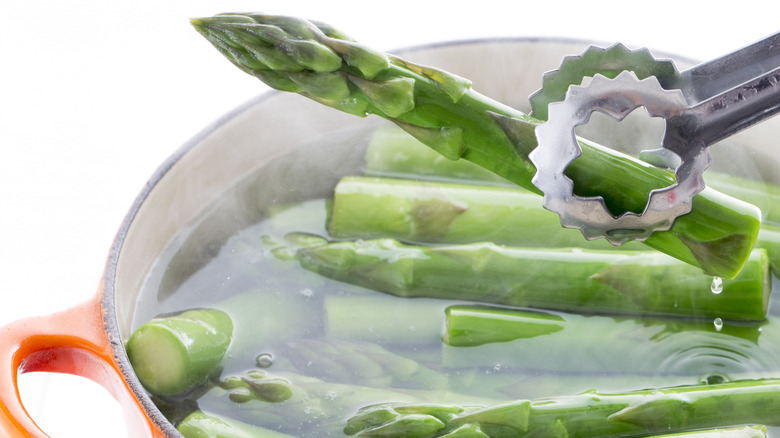The Victorian Era Utensils Created Purely For Serving Asparagus
From sporks to knorks, utensils have been invented to provide convenience while simultaneously refining the dining experience. Some utensils have been made specifically with a certain dish in mind, like egg scissors, cake forks, and asparagus servers.
Asparagus servers were invented with the sole intention of picking up long pieces of vegetables and serving them gracefully, particularly during the Victorian era. At the time, asparagus was a food served among the upper echelon of 18th century society. The vegetable was a unique, impressive item to serve alongside other recipes at a time when social conventions and etiquette — particularly in the dining room — were highly prescribed.
Asparagus servers were dining tools that symbolized class and manners. They were elegant devices that helped sophisticated dinner guests transfer pieces of asparagus from serving platters onto dinner plates without embarrassment. Since using a spoon or a fork might turn into a cumbersome, awkward experience picking up and transferring long stalks of food, asparagus servers eliminated some of these inconveniences.
A refined dinner tool
While it may be easy to confuse asparagus tongs and asparagus servers, asparagus servers are not in the same category that asparagus tongs fall under — they are not the long, lean devices that look like they could also be used to move food items on a grill. Instead, these asparagus-specific utensils are designed as shorter pieces of V-shaped silverware. The idea behind asparagus servers is to give diners the ability to pick up several asparagus stems at once.
The silver that asparagus servers are made of is commonly engrained or stylized, and the utensils are crafted in wider, flatter shapes than a standard tong. Both slender asparagus tongs and asparagus servers can be found in antique stores, and some are artfully designed to look like the stalks of the green vegetable itself. If you do happen to come across these antique items, you can use aluminum foil and baking soda to polish the silver to a shine that Victorian-era hosts would be pleased to see.

